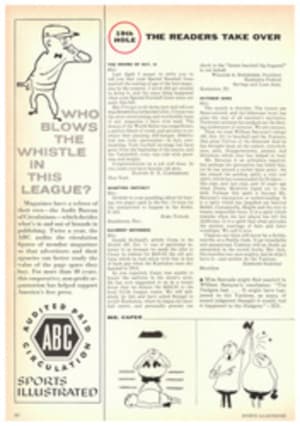
For golfers of all handicaps, long hitters especially
When I start forcing my shots, I am treading on dangerous ground: unless I catch myself immediately, I will get my swing completely out of timing. Getting it back is no easy matter.
The soundest method I know of to recover your timing is by swinging more slowly—all the way through the swing, I mean, from the waggle at address through the finish. Here's the way I look at it. A player generates club head velocity, the factor behind distance, through the speed with which he, or she, can whip his hands through the ball. Fundamentally, this is a matter of strength, but strength that is tempered by balance and rhythm and the accurate path of the club head—in short, the elements of control. High-handicap players snatch at the ball with a violent burst of energy, thinking they are increasing the speed of the club head. They're not. That snatching action is almost like starting the swing from scratch. It derives nothing at all from what has gone previously into the swing and delivers its power wrongly, whereas correct pace and power are building all the way in a swing that is under control.
When you lose your groove, you will save time and increase the life span of your wedge by slowing down every action. Then, once your timing has returned, you can gradually up the tempo of the coordinated swing you've rebuilt, and your timing will stay intact.
from FAY CROCKER, Club de Golf, Montevideo, Uruguay
TWO PHOTOS
TWO ILLUSTRATIONS
To recover timing, change tempo of swing from too fast (left) to slow and even (right)
NEXT WEEK'S PRO: BILL ZONKER ON TAPPING THE PUTT

